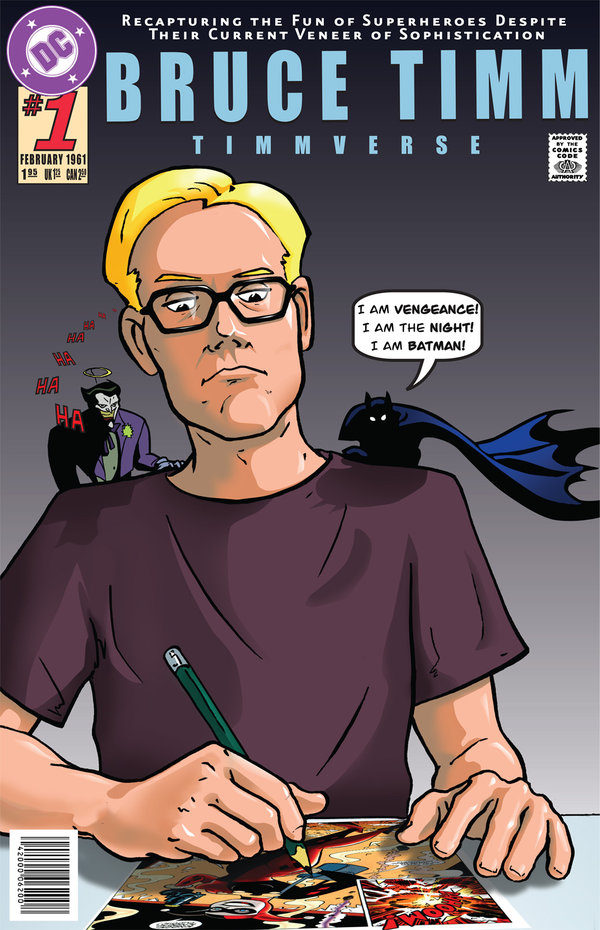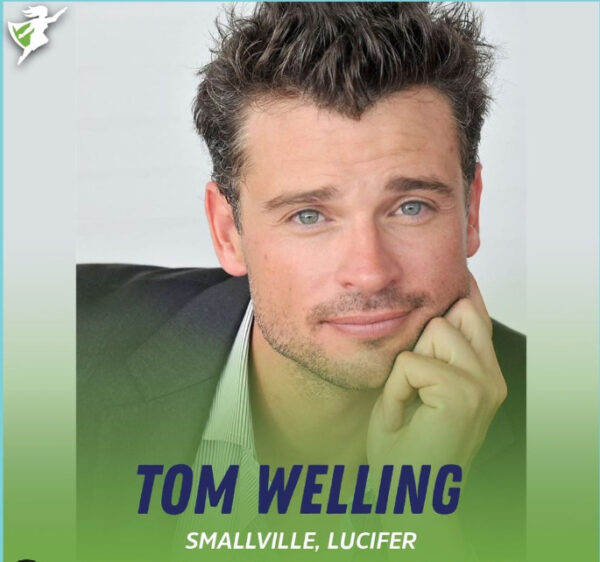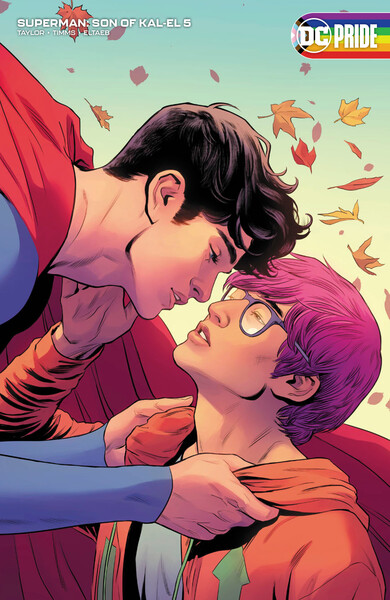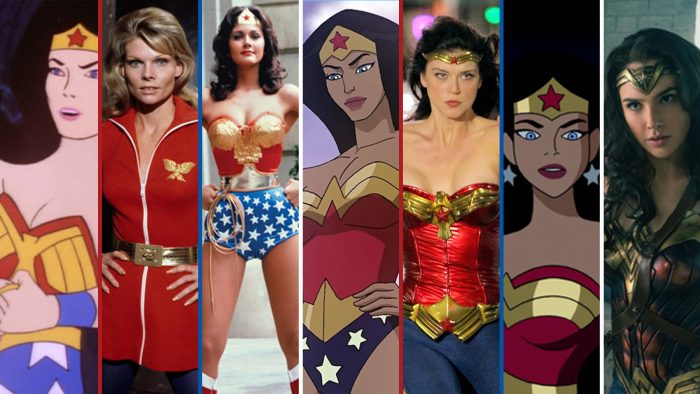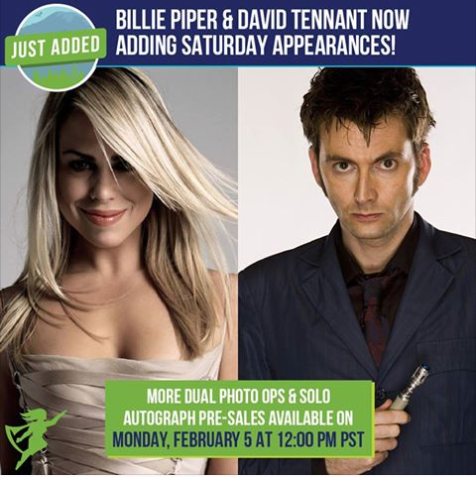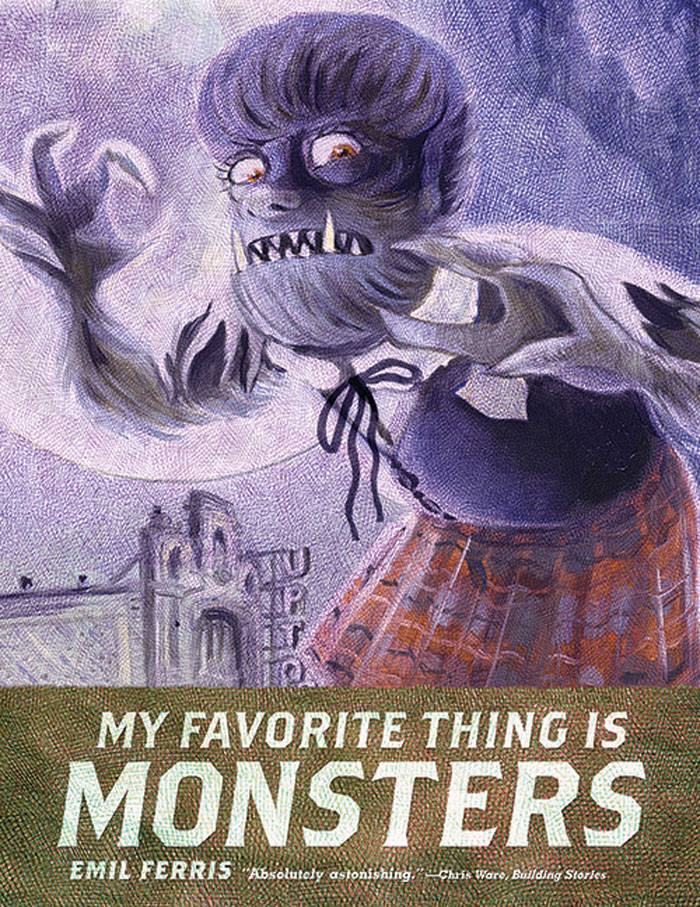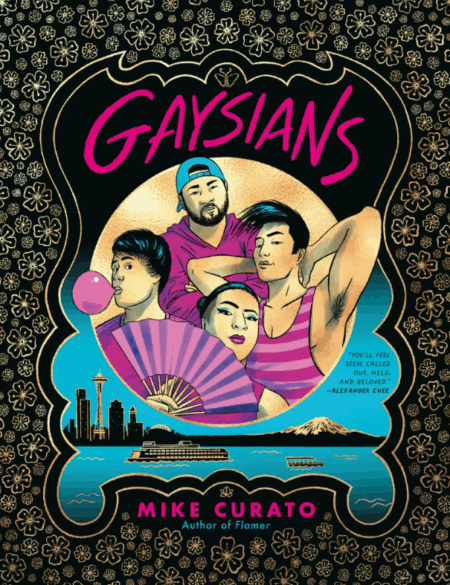So there’s this weakness of mine that some will call a little…asinine. Cheesy, even. Maybe in some circles I wouldn’t be considered a “true nerd” because of it.
I will watch *anything* spearheaded by Bruce Timm. Bonus: Paul Dini, Andrea Romano, and a few select voice actors. Better yet as cartoon-ified members of the Justice League.
Growing up, my brother was the one who read all the comics. Being much younger than he, I wasn’t to be trusted with such prized possessions. Consequently, I settled for the cartoons. It all began with Batman: The Animated Series. From then on, the ‘90s were a glorious trip into superheroes for kids like me. You know, the ones who didn’t have the money to support a comic habit.
There will never be another era of cartoons quite like the ‘90s, and I’m not just saying that because I grew up in them. No other decade had such stunning animation, with perfect blends of adult humor targeted toward kids, complete with themes fit for any English teacher to foster critical thinking skills.
That said, there has been some pretty exhaustive research (read: superamazingholycrapthatwasfun watched ALL the things) to compile this special list of my Top 5 (in no ranking order) DC animated movies you should see, if you haven’t followed the comics for the past twenty years and are fairly new to the world of the Justice League. (I see you over there, wearing a Batman shirt and having no idea why he always wins. *ahem*)
***SPOILERS AHEAD***
1. Superman: Doomsday (2007)
Folks, this one’s important. Not just fun to watch, not just an action-packed thrill ride, but honestly crucial to the understanding of Superman and what makes him one of the most ubiquitous icons in American mythology and fandom. Adapted from the 1992 DC Comics storyline The Death of Superman, the film opens with the mind of Lex Luthor, Superman’s oldest enemy. Superman is seen as the guy who always saves the day, and people worship him for it. Meanwhile, his relationship with Lois Lane strengthens as the two attempt to deal with his “secret identity.” Suddenly, a wild Doomsday alien killing machine appears! Superman does what he always does, and fights to the last breath to stop the monster. The fight is powerful and lengthy, but is there specifically to teach you just what it takes to kill the Man of Steel without using kryptonite. Canonically, he hasn’t yet met Batman, and therefore doesn’t automatically try to find Doomsday’s weakness. Lex takes the beating as a stab to his ego, and devises a way to use Metropolis’s grief to his advantage. Abruptly we see a city without Superman; who will help others in a world without a safety net? Superman returns just in time, but of course he’s not the same. While we know the son the Kents raised, we meet the opposite in Luthor’s creation—a boyscout turned tyrant. There’s something to be said, thematically, about the way Luthor treats the first clone. He’s a bad parent, and uses lines abusive guardians would use, like “I’m only doing this because I care,” and “I brought you into this world. I can take you out of it.” The clone is a perfect example of how Superman could have turned out if he hadn’t been raised by good people, and an outward reflection of what may already be within him should the world turn sour (his perpetual inner conflict). Scene to keep an eye out for: Superman poignantly falls into his own memorial. It’s a statement on the difference between his ego and idealogy vs. Luthor’s.
The entire film keeps you on the edge of your seat and gives you a rapid synopsis of the much larger storyline from the ‘92 comics and subsequent novel by Roger Stern. Anne Heche plays a brilliant Lois Lane opposite Adam Baldwin’s Superman. Ultimately the story is a great braintease: Who are we, as a people? Where do we look for hope, and who do we become when no one is watching? “It’s what I’m here for.”~Superman
2. Wonder Woman (2009)
Another crucial film. Long after Batman and Superman get their due respect in various animated series, Wonder Woman finally gets a standalone film (history is currently repeating itself with the live-action theatrical releases). While we saw in Justice League and Justice League: Unlimited the character’s development and strength, the ‘toons merely dipped their toes in the water with her. As the third larger-than-life hero in the Justice League Trinity, we finally get to see her origins and society’s history.
We open with Ares, the god of war, in a massive battle with the Amazons led by Hippolyta. Hippolyta’s pretty pissed at him not only for waging war, but for forcing himself on her to create a child she didn’t consent to. As she’s about to make the killing stroke, Zeus intervenes (because how dare a woman kill one of his spawns), but not before Hera has a word. Hera promises Hippolyta a sanctuary, complete with immortality and a utopian island free from men, that also serves as a prison for Ares. There, she creates her daughter, Diana. Themyscira is shown as a place of enchanting peace and enlightenment, but for all its perfection, some of the Amazons are growing restless and yearn for the outside world. A perfect example of peacocking masculinity in Steve Trevor crash lands on the island, and soon Diana wins the right to bring him back to his country. He’s a womanizing, sexist, all-heart-and-no-brains pilot, and is instantly enamored by his female polar opposite. Her second mission, however, brings the two closer to an understanding. They work together to find the escaped Ares, all the while engaging in a verbal battle of the sexes. Steve (unwittingly) admits he’s a pig, and Diana admits she could use more than a day’s worth of education on men before forming more opinions.
This is one for your women’s studies class. Wonder Woman may have been conceived at a time of rampant sexism and misogyny (1941), but has always been seen as a powerful feminist icon. In this movie, she illustrates the need for communication between men and women about what it is we do to each other. There is also a touching dynamic between Alexa and Artemis as Amazonian sisters, proving that there is no one way to be female or feminine. Persephone, the traitor, gives Hippolyta a great piece of her mind: “Yes, Hippolyta, the Amazons are warriors. But we are women, too.”
Oh, and by the way…the story is by the incomparable Gail Simone. If you don’t know who she is, go read. NOW.
3. Superman/Batman: Apocalypse (2010)
Kind of a misnomer, to be honest. Wonder Woman had just as much a part to play in the plot as Batman and Superman. BUT. We get introduced to the refreshing Supergirl! Yay!
And that’s pretty much the point. Supergirl’s origin story is tweaked slightly to have her land in Gotham, alone and afraid, and having to learn American English in a short span of time. Luckily in this canon, there’s a Justice League, so the heroes are in contact with each other. While Kara Zor-El is busy adjusting to life on Earth with Clark’s help, Darkseid learns that she’s more physically powerful than Superman. He becomes determined to capture her and groom her to lead his armies. The Trinity starts acting like concerned parents, trying to find the best place for Kara. Wonder Woman ensures Kara’s combat training, much to the chagrin of Superman. Of course, as soon as Kara starts asserting her independence to them, she gets yanked onto Apocalypse, Darkseid’s world of living hell. We get a peek into Batman’s character, as he likes Krypto’s assessment of Kara but fights another, more evil dog on Apocalypse. Every step of the way, he tries to advise caution to Superman in regards to the teen cousin, but naturally Clark doesn’t listen. Batman, Wonder Woman, and Superman enlist Barda’s aid to get Kara back, and once on the other planet they all fight their way to Darkseid. In the end, it’s more about a power play/chess game rather than physical prowess. (Although Wonder Woman and Barda battling the Furies is a great match.) Ultimately, we see just how great Supergirl could be, if given good guidance and training to control her powers. This is the part where I add the cliche: Her greatest strength is her heart, evoked by “Did he influence me, or bring out a darkness that was already there?”
Thematically, what we have is a fable on the subject of free will. Darkseid is the worst tyrant—the kind that convinces you he cares, yet uses you till you’re dried up. And even though the “parents” of the Justice League exercise a lot of control, they usually stick to having people find their own paths (closely monitored). Also, Kevin Conroy, Susan Eisenberg, and Tim Daly. Because of reasons.
4. Justice League: The Flashpoint Paradox (2013)
By now you might be wondering why I haven’t listed any Green Lantern films. That’s because they’re not yet good enough to make this list. I’m attempting to give you the cream of the crop for a new watcher. That said, I give you the best of the bunch regarding The Flash. Warning: This film is not for anyone under age 12.
Adapted from the 2011 Flashpoint comic series, we are given a key insight into Barry Allen’s character and willingness to help others. His nemesis, the Reverse-Flash, drops him into a world where his mother never dies. The result is a nonexistent Justice League, where instead Aquaman and Wonder Woman are at war with each other at the expense of entire countries. Some villains from the world we know are instead resistance fighters. Hal Jordan is no more than a pilot. Cyborg is an employee of the US Government, sent to devise a way to end the war. And most chilling of all: Batman is not Bruce, but Thomas Wayne, his father. Thomas’ form of justice comes without the anti-gun, anti-killing code of honor, and at the bottom of a flask. Yet Barry is able to convince him, through sheer force of optimism, that he needs to be The Flash to make things right. Where is the Man of Steel, you may ask? Well, a world without Flash’s perky do-gooder attitude also means a world without a larger-than-life Kryptonian. His visage is among the saddest you’ll see in the gritty, Sin City meets 1984-esque world. “Suicide Squad” even gets a shout-out, an homage to how closely alike the governments of both worlds would operate, perhaps illustrating the delicate balance each decision impacts life.
Worst of all to think about is that at his core, The Flash is one of the most selfless of the heroes. Sure, he likes the glory and appreciation, but usually he doesn’t actually care if someone says Thank You. At the end of the day, he can sleep at night knowing he helped someone in need, even if it was in the smallest of ways. His methods are more kindness-driven than strategy or brawn. What the Reverse-Flash does is play on said quality here. Selfishly, he could save his mother. But that same selfishness would create the world he could never want or live in, and in fact fights every day to prevent.
Most touching moment award: Flash as middleman between the two Batmans. I’ll let you watch to find out how. Which brings me to…
5. Justice League: Doom (2012)
Honestly, I could have listed a host of Batman films to fill the No. 5 spot. But none of them are for a beginner.
To get the best wide-angle lens on Batman and who he is, look no further than Justice League: Doom. This is among my favorites of all time. And it’s not just because it features the absolute best casting in Kevin Conroy, Tim Daly, Susan Eisenberg, and Nathan Fillion. Don’t let anyone tell you these aren’t the best voices for their characters; you don’t need that kind of negativity in your life.
Presented with a well-functioning, new-ishly formed Justice League, a basic mystery of higher-than-high tech given to the Royal Flush Gang unfolds as a larger plot by Vandal Savage, the immortal conqueror. In the process, he calls together a team of villains typically pitted against each hero: Cheetah to Wonder Woman, Mirror Master to The Flash, Bane to Batman, Metallo to Superman, Star Sapphire to Green Lantern, and Ma’alefa’ak to Martian Manhunter. Each villain laments that s/he had tried for years to take down their counterparts, so how is Savage going to succeed? His plan involves careful strategy and manipulation based off of a key Leaguer’s intel—Batman’s. The villains do their part to take down the heroes, but the plans are warped a bit to involve killing, a corruption Batman would never use. Of course, Batman may never have included a contingency to subdue himself, yet nevertheless, Savage’s knowledge of his secret identity may have been all Bane needed. Though the plans for the other heroes outline effective ways to play on psyches and physical weaknesses, the plan to kill Batman was much less thought-out. The attempt was there, but Bane points out, “I buried you alive.” Batman coolly replies, “That was your first mistake.” As the League works together to foil Savage’s typical destroy-the-world ploy, older fans are treated to the Hall of Doom of Super Friends fame. A wild dichotomy appears as the oldest guy in the room, who should be the wisest, aims to stop the youngest dude in the room, whose intelligence is largely based in technology.
At the end, the League is left wondering if they can trust Batman. Batman doesn’t quite defend himself so much as the reasoning behind his contingencies. Superman mentions that he would never do that to him, and Batman snaps, “Then you’re a damned fool.”
You can re-watch all of the ‘90s TV cartoons in which Batman is featured, but never come close to as condensed a package of Bruce Wayne’s Brain 101. There will never be another hero with his tireless work ethic (screw you, Alfred, for tending his injuries and making him eat), his simple code of not killing (which even Wonder Woman and Superman have come close to doing), his sheer force of will rivalling that of Green Lantern (see: how he survives burial), his mastery of strategy (he knows how his plans work and exactly how to save everyone), and his near-flawless “I don’t GAF what you think because I’m getting the job done” attitude.
He likes to work alone for a reason. He is a legend not because of his genius or prowess, but because he operates with neverending self-evolution and adaptability. Every move he makes, he learns. He is the best of us, and the worst of us. And he truly doesn’t GAF if you appreciate it.
And there you have it! But before you go, I’d like to enter a wonderfully honorable mention: World’s Finest. Watch it as either the movie or the three-part Superman episode. It’s key to understanding the dynamic between Clark Kent and Bruce Wayne. Let me tell you, fans EVERYWHERE were squeeing over almost everything about it when it first aired in 1997. From then on, we were allowed to see the two banter and save each other, and even call each other friends. Go see it. It’s necessary.
Further recommendations:
Son of Batman (2014) and Batman v. Robin (2015). Little pipsqueek newbie Robin gives Batman a run for his money.
Justice League: War (2014). Awesome look into why the heroes are better when they’re fighting together, and how each personality learns to appreciate working with a team.
Batman: Under the Red Hood (2010). There’s a glorious further peek into Batman’s psyche: he mentions a “hell of [his] own making.” At the end, there’s a perfect exchange between Batman and the Red Hood that exposes why Batman has yet to kill the Joker. Joker’s character is brilliantly executed.
Justice League: Crisis on Two Earths (2010). I thought this would take the Doom spot, but nope. It’s beautifully done, and offers a world where our heroes are the worst versions of themselves. Best line naturally comes from Batman: “We both looked into the abyss. But when it looked back at us, you blinked.”
Batman: The Dark Knight Returns 1&2 (2012-2013). Frank Miller’s imagined take on the retired hero. What does he do when he’s a workaholic and forced into inaction? Can there be a world without Batman? Gritty, vengeful, wise, and exceptional. Plays with the “who created whom” psychological conundrum. Also, V for Vendetta gets a cameo in a drug store!
Go forth, and enjoy!


